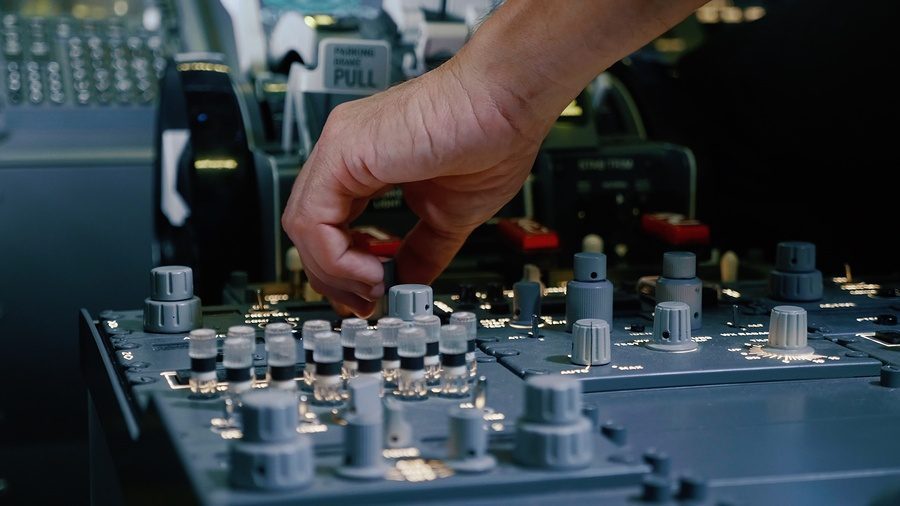Risk Mitigation for Electronic Manufacturers in the New AS9100D
For electronic manufacturers, when ISO 9001:2015 certification by NSF-ISR rolled out, along with it came the complementary revisions to AS9100, called Revision D. The core concept of risk-based thinking has been placed at the center of both these important standards.
As an industry, aerospace has always held risk management in high regard, given the risky nature of its work. This is why AS9100 certification by NSF-ISR takes risk-based thinking a few steps further than ISO 9001 certification by NSF-ISR.

As a part of the newest revision of the quality management system, risk-based thinking asks companies to consider what risks they face at various points in the manufacturing process. This includes planning phases for both the company and for products and services and during management processes such as corrective actions. Risk-based thinking asks companies to take a critical look at what triggers action and what actions would be taken should a problem arise. Risk-based thinking IS NOT asking organizations to identify risks and track them.
Identifying risks is a job for risk management. Where risk-based thinking involves an approach to the whole business, risk management focuses on identifying risks, determining actions that will mitigate those risks and then tracking those actions. Risk-based thinking has not eliminated risk management. Rather, it has expanded the areas in which businesses might consider risks as an overall quality management system.
In AS9100D certification by NSF-ISR, risk-based thinking keys in on operational risk management. Operational processes are those that your organization provides in order to produce products and services. Competitive risks or other non-operational risks are not part of what AS9100 certification by NSF-ISR is looking at.

Specifically, AS9100 certification by NSF-ISR has five areas that are included in risk-based thinking to improve quality management related to planning, implementation and controlling operational risks.
Assign risk management responsibilities. Decide who will do your risk management. Is it a team? If so, who will be included on the team and what areas of your organization do they represent? Ideally, your team will be involved in all areas of the management process to give it the best perspective for managing risk.
Define the risk criteria. What do you define as a risk? How do you measure them? How will you decide what risks you’re willing to accept and which will require intervention? In aerospace, we are familiar with the generally expressed terms of risk being the likelihood of occurrence and the severity of the consequences. Do your criteria need greater detail?
Identify and communicate risks. If you determine a risk is present, this needs to be communicated to the team that it will impact. Without communication of the risk, identifying it serves no purpose.
Identify risk mitigation actions. For as many risks present in aerospace manufacturing, there are equally as many ways to address those risks. Organizations must determine which ways risks will warrant action. If mitigation is deemed appropriate, then plans must be made for how the risk will be addressed and the actions tracked.
Accept remaining risks. It is impossible to mitigate all risk. Some risks cannot be eliminated and some are too costly to mitigate. In these cases, some risk is simply accepted and noted so the process can continue.
Due to the nature of the aerospace industry, risk assessment has always been a key factor in our quality management systems. Though this approach is new in AS9100, organizations in aerospace already understand risk management and its importance.
Consequently, the move to AS9100 certification by NSF-ISR should be fairly smooth for most organizations. Risk assessment and management processes are already in place and can be expanded for use with risk-based thinking. Some other industries may struggle with implementing entirely new risk-based systems but for aerospace, the changes are simply an extension of the mindset and practices we already use.
The updated AS9100 certification by NSF-ISR accreditation continues to push the aerospace industry for greater safety and reliability in its products. With this new set of standards, risk management and opportunity awareness also help improve quality and safety.
This system integrates business and process strategies to build greater efficiencies and quality products and services.
Organizations that are transitioning to the new AS9100 certification by NSF-ISR standards can begin by educating relevant employees on the revisions. A quality management system can only ever be as strong as those who uphold it.
Levison Enterprises and the AS9100 Certification by NSF-ISR
AS9100 certification by NSF-ISR is but one of the many quality standards that Levison Enterprises proudly maintains. As an electronic manufacturer for the aerospace industry, we have eagerly evolved our quality management system to match the needs of a changing industry and marketplace.
We don’t hold these certifications and accreditations because they are required. We hold these certifications because we value quality and want our customers to know that high-quality, dependable and on-time products are what we believe in.
Further, all products manufactured by Levison Enterprises receive the same level – the highest levels – of quality management. We take our most stringent quality standards and apply them to every product that comes through our doors.
Whether you are in the aerospace industry or not, your product is given the same level of high-quality attention to process, product, and customer satisfaction.
To discuss your next aerospace, or other, project. Contact Levison Enterprises to get the highest quality product and service available.